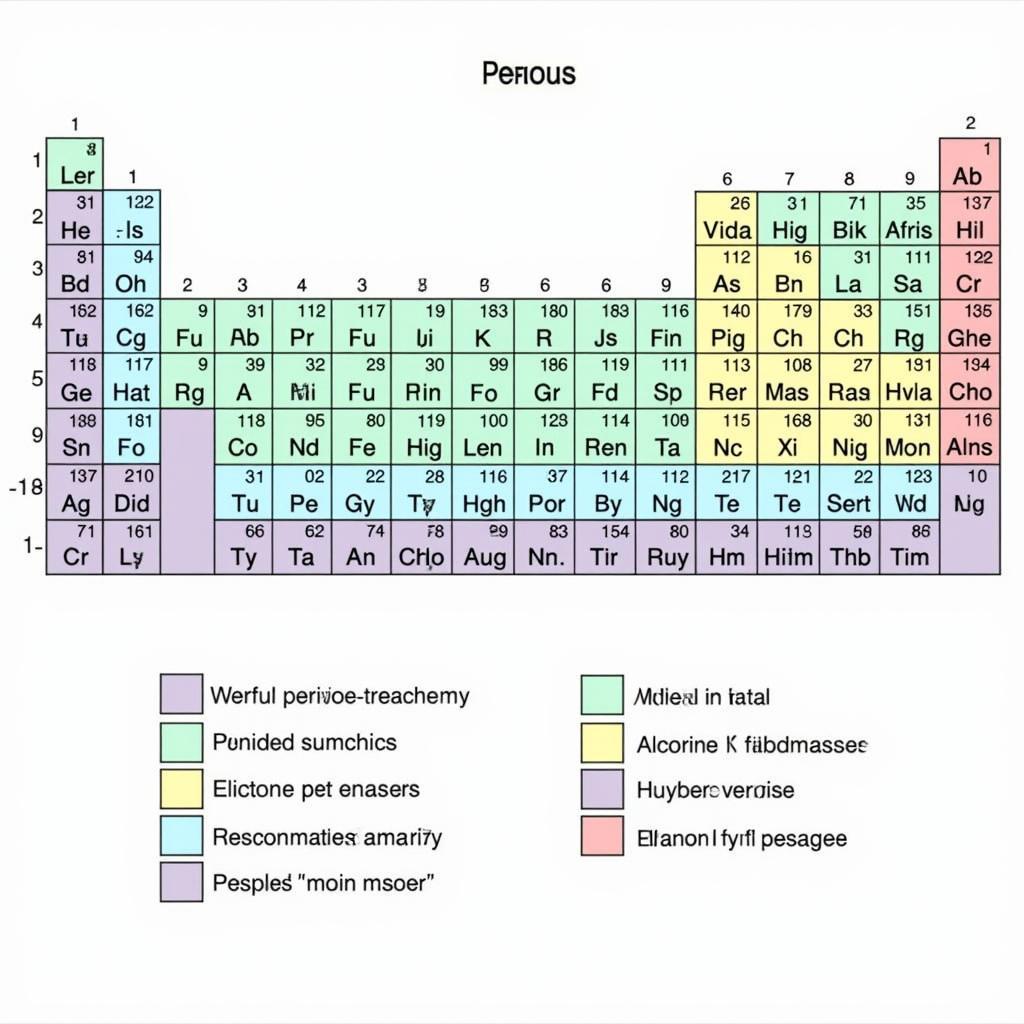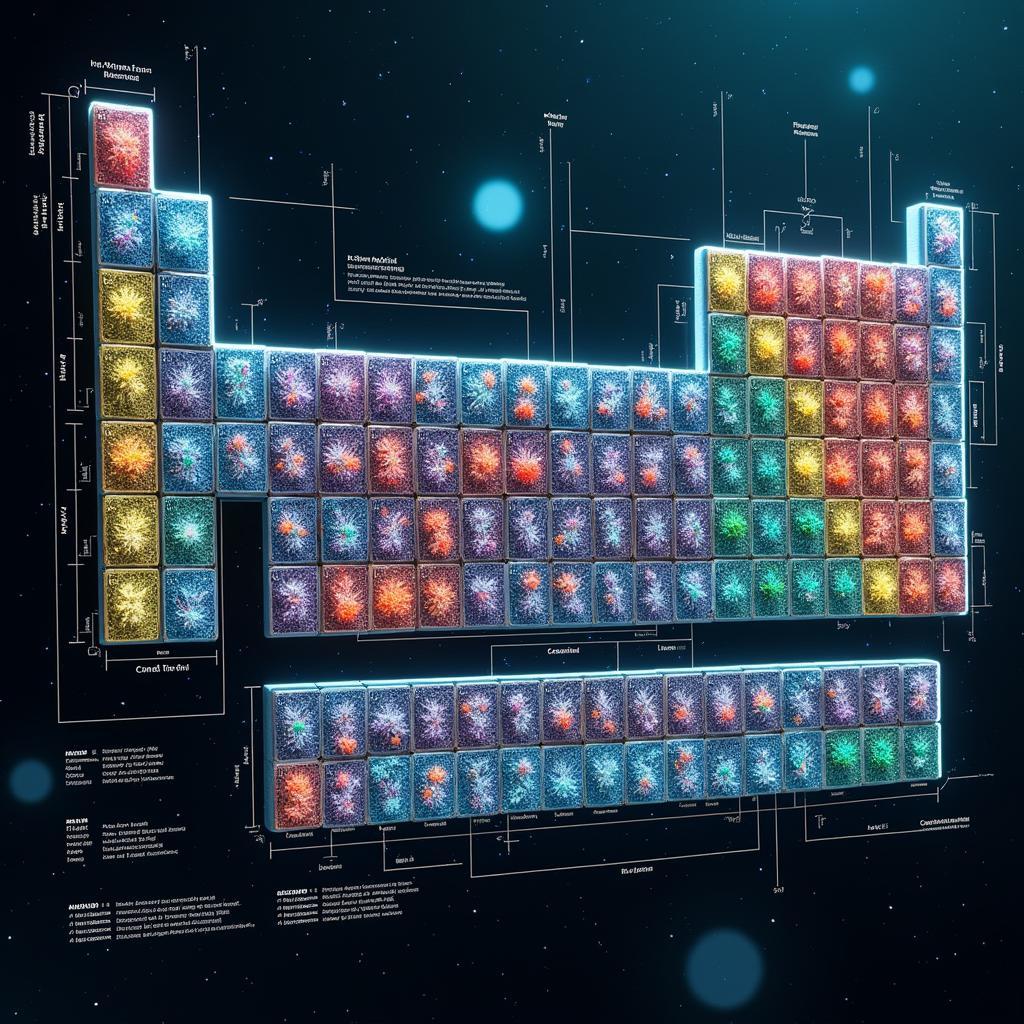The Royal Society Periodic Table is more than just a chart; it’s a testament to human ingenuity and a powerful symbol of scientific progress. It’s a story woven through centuries, connecting discoveries across cultures and generations. This fundamental tool provides a structured arrangement of all known elements, organizing them based on their atomic number, electron configuration, and recurring chemical properties. Just after its initial conception, the periodic table revolutionized the field of chemistry, providing a framework for understanding the relationships between elements and predicting the properties of undiscovered elements.
The modern periodic table, as recognized by the Royal Society and other scientific bodies, is a culmination of centuries of scientific inquiry. From ancient Greek philosophers pondering the fundamental building blocks of matter to alchemists striving to transform base metals into gold, the journey to understanding the elements is rich with intrigue. This exploration delves into the history and significance of the Royal Society periodic table, its impact on various scientific disciplines, and its role in shaping our understanding of the world around us. See how the music impacts society with the Bach Society Houston.
Early attempts at classification laid the groundwork for Dmitri Mendeleev’s groundbreaking work in the 19th century. Mendeleev’s periodic table, published in 1869, was revolutionary because it not only arranged the elements in a logical order but also predicted the existence and properties of elements that were yet to be discovered. This predictive power cemented the table’s status as a cornerstone of modern chemistry. You can find more information about the impact of music on society on our website.
Understanding the Structure of the Royal Society Periodic Table
The Royal Society periodic table is arranged in rows called periods and columns called groups. Elements within the same group exhibit similar chemical behavior due to their shared electron configurations. This structure allows scientists to predict how elements will interact with each other, forming the basis for chemical reactions and the creation of new compounds. The table also reveals trends in properties such as electronegativity, ionization energy, and atomic radius, providing insights into the behavior of elements in different chemical environments.
How is the Royal Society Periodic Table Organized?
The periodic table is organized by increasing atomic number, which represents the number of protons in an atom’s nucleus. This simple yet elegant arrangement reveals the periodic recurrence of chemical properties, hence the name “periodic table.” Each element is represented by a symbol, usually derived from its Latin name, along with its atomic number and atomic mass. The arrangement of elements into periods and groups provides a visual representation of the underlying electronic structure of atoms, enabling scientists to quickly grasp the relationships between elements.
 Royal Society Periodic Table Structure
Royal Society Periodic Table Structure
The Impact of the Royal Society Periodic Table on Science and Technology
The Royal Society periodic table has been instrumental in advancing various scientific fields. In chemistry, it provides a framework for understanding chemical reactions, predicting the properties of compounds, and designing new materials. In physics, it helps explain the behavior of atoms and molecules, contributing to our understanding of the fundamental forces of nature. In biology, the periodic table is essential for understanding the role of elements in biological processes and the development of new pharmaceuticals. The Menace 2 Society poster serves as a stark reminder of societal issues, much like how the periodic table reveals the building blocks of our physical world.
What are some Real-World Applications of the Periodic Table?
The applications of the periodic table extend far beyond the laboratory. It plays a crucial role in the development of new materials, from lightweight alloys for aircraft to high-performance semiconductors for electronics. It is also essential in the production of fertilizers, pharmaceuticals, and other essential products. Furthermore, the periodic table is a valuable tool for environmental monitoring, helping scientists track and understand the impact of pollutants on ecosystems. Check out our collection of Menace to Society t-shirts.
 Real-World Applications of the Periodic Table
Real-World Applications of the Periodic Table
The Future of the Royal Society Periodic Table
The Royal Society periodic table continues to evolve as scientists discover new elements and refine our understanding of existing ones. The search for new elements pushes the boundaries of scientific knowledge, challenging our understanding of the fundamental building blocks of matter. As technology advances, new techniques are being developed to study the properties of elements under extreme conditions, providing further insights into their behavior. Our understanding of the how music impacts society shows the power of cultural forces, similar to how the periodic table reveals the forces governing the elements.
Will New Elements be Added to the Periodic Table?
The quest to discover new elements continues, with researchers exploring the limits of nuclear stability and seeking to synthesize elements beyond the currently known ones. These discoveries not only expand the periodic table but also offer new opportunities for scientific and technological advancements. The music impact on society is a powerful testament to the human spirit, just as the periodic table demonstrates our intellectual capacity.
 The Future of the Periodic Table
The Future of the Periodic Table
Conclusion
The Royal Society periodic table stands as a powerful symbol of scientific achievement, providing a fundamental framework for understanding the elements and their interactions. From its historical roots to its ongoing evolution, the periodic table continues to shape our understanding of the world around us, driving innovation and inspiring future generations of scientists. Its elegance and predictive power make it a cornerstone of modern science, a testament to the human quest for knowledge and understanding.
FAQ
- What is the significance of the Royal Society’s involvement with the periodic table?
- How does the periodic table help predict the properties of elements?
- What are some of the most recent additions to the periodic table?
- How are new elements synthesized?
- What are the limitations of the current periodic table?
- What is the role of the periodic table in education?
- How has the periodic table impacted different scientific disciplines?
Need assistance? Contact us 24/7: Phone: 02043854663, Email: [email protected], or visit us at Zone 34, Bac Giang, 260000, Vietnam.